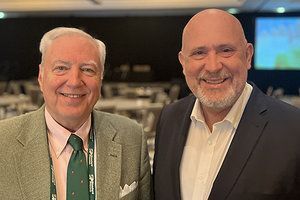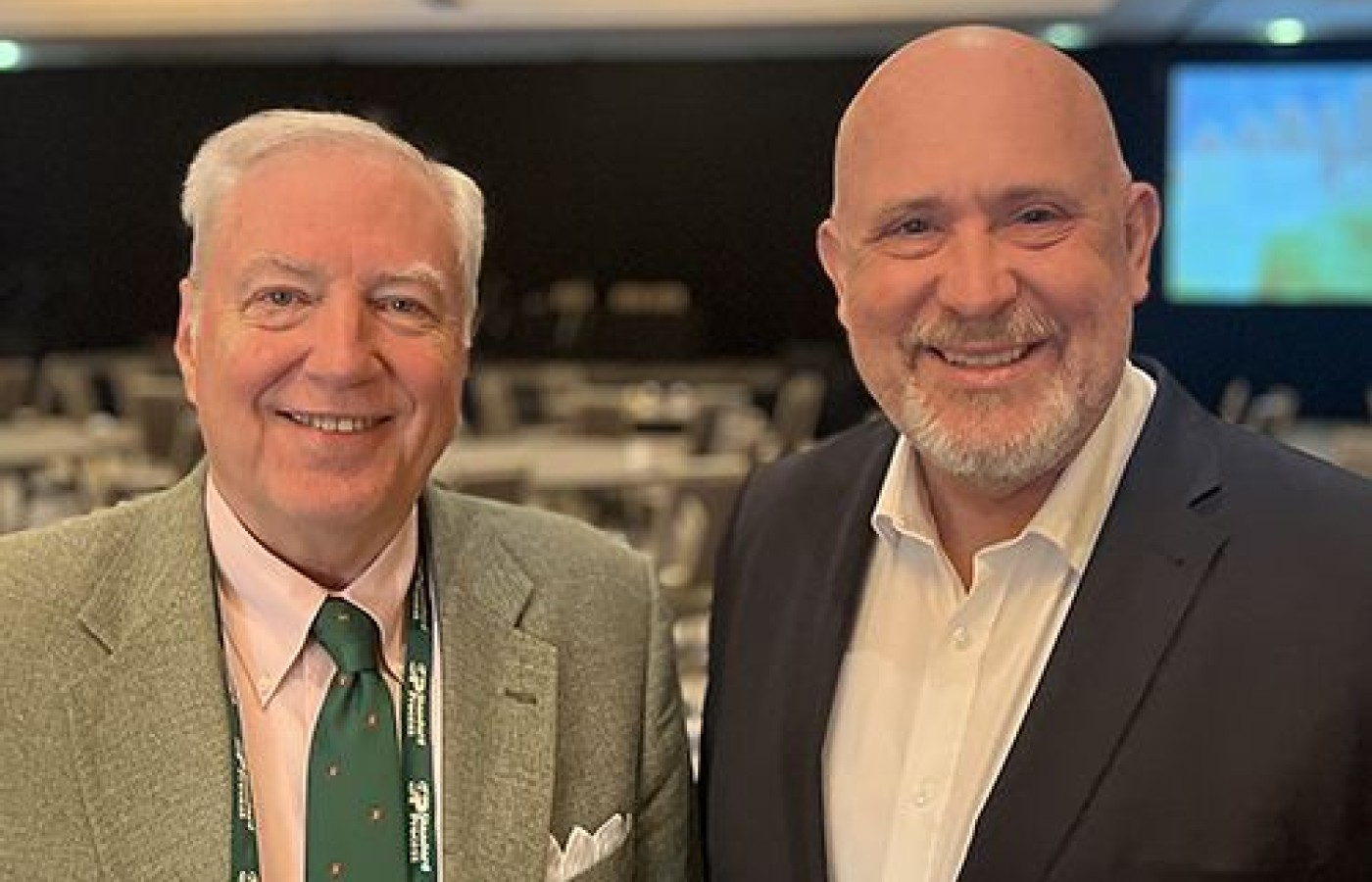Recent laws in New Jersey and California represent a disturbing trend that will negatively impact a practice’s ability to collect monies from patients, as well as expose them to significant penalties if the practice does not follow the mandatory guidelines to a T. Please be aware that a similar law may be coming to your state. The time to act is before the law is passed.
David O'Bryon: Reflections on Four Decades of Service
Editor's Note: The following article is reprinted with permission from the October 2022 World Federation of Chiropractic's Quarterly World Report (QWR). Is has been edited to conform with Dynamic Chiropractic's style guide.
In July, David O'Bryon JD, CAE, stepped down from his role as president of the Association of Chiropractic Colleges (ACC). To mark his retirement, the QWR interviewed him to find out more about his fascinating life and career in chiropractic and in the highest echelon of American politics.
David O'Bryon grew up in the U.S. capital city of Washington D.C. President Richard Nixon lived two doors down and he remembers growing up with the Nixon children, recalling that the first color television set he ever saw, in the mid 1950s, was in the basement of the Nixon house.
His was a close-knit family, with his grandfather, General Myron Cramer, living just a couple of blocks away. At that point, he had returned from the Tokyo War Trials, where he had served as a American judge for 31 months.

After attending Gettysburg College, Mr. O'Bryon graduated with a Bachelor in Government Relations. Still in his 20s, he was mentored by a senator, Charles Mathias (Maryland) and became an aide de camp on the staff of congressional representative Gilbert Gude. He then worked for his successor, Newton Steers. He worked in Congress for most of the‘70s and studied for a law degree at night.
It was when working with one of his law professors that he was introduced to Harry Rosenfield, who at the time was serving as the general counsel to the American Chiropractic Association (ACA). One thing led to another, and in 1980, Mr. O'Bryon joined the ACA staff as its first full-time advocate in Congress.
He continued working for the ACA until 1985. During this time, he wrote the District of Columbia independent chiropractic board's scope-of-practice bill and ancillary procedures bill. He left the employment of the ACA in 1985 to become an independent consultant, but continued to serve the ACA until the mid-1990s as part of his association management company.
During this time, the U.S. chiropractic colleges would often come to the ACA seeking help and Mr. O'Bryon was contracted to provide advice and assistance. This provided him with unique institutional memory and close relations with generations of college presidents, including Carl Cleveland II, Joseph Janse, Ernest Napolitano and every college president at Northwestern University of Health Sciences (then Northwestern College of Chiropractic) since its inception.
At this time, the Association of Chiropractic Colleges, which had formed in the late 1980s, had no staff members, with the presidents sourcing their own administration from year to year. The organization was a successor to the more informal Association of College Presidents, a loose body that had never been formally incorporated.
In 1995-96, the ACC considered it time to acquire some formal support, and Mr. O'Bryon was approached by the then-president of the ACC, Reed Phillips; Vice President George Goodman from Logan College of Chiropractic; and Secretary, ACA Past President Ken Padgett.
Reflecting on his career, Mr. O'Bryon considers that a number of individuals have been influential. In particular, George Goodman was a close colleague, particularly when lobbying for and passing cultural authority-changing legislation with the Veterans Administration, walking the marble halls of Congress and working with representatives from Goodman's home state of Missouri.
In professionalizing the ACC, Mr. O'Bryon became involved in developing its annual congress, including the provision of networking opportunities for college staff. At the same time, funding became available to develop research agendas. The two congresses eventually came together to form the ACC RAC Congress.
Mr. O'Bryon comments, "Wherever we went in those days, it was research that was important. With research to back up what we were claiming, our work in government became far easier. Since that time, we now have lots of researchers doing lots of research and without a doubt, research has been very important. Through our work, in the late 1990s we were able to obtain $2m in grants specifically for chiropractic research each year for a number of years. This funding was critical in demonstrating that we were a legitimate organization."
Mr. O'Bryon recalls that a number of very significant studies came out of the grants obtained during this time. However, with changing administrations, the funding dried up and alternative strategies had to be sought.
"Standardization of the education process and the evolution of evidence-based education that other health disciplines would recognize was most important. Chiropractic was recognized by Medicare in 1974. The recognition of CCE by the federal government followed and this has continued to improve, particularly under the leadership of Dr. Craig Little, whose work has been phenomenal."
During these years, the long-running antitrust suit Wilk, et al., v AMA was ongoing. Mr. O'Bryon pays tribute to those who sacrificed years of their lives to doggedly pursue the case. While he says there was little direct contact, he was well-aware of the activities of the AMA that were being prosecuted in the background as an attempt to undermine the chiropractic profession.
He remembers, "In those days the AMA was all powerful and I was a group of one. Many times when having to deal with any matter involving the AMA, I very much felt like I was the last man standing."
Asked about what he considers to be his greatest achievement, Mr. O'Bryon considers that it was when the chiropractic profession moved into the Veterans Administration (VA) and active-duty military.
"I put 30 years in before we were able to be successful. This included an eight-year demonstration project with the military, which started in 10 locations and subsequently added another three. Strom Thurmond, chair of the Armed Services Committee, was an outstanding advocate for us. Efficacy and practicality of chiropractic was front and center and a Department of Defense-commissioned study showed that at each of the 13 bases ,the top-ranked health professional was the chiropractor."
Mr. O'Bryon recalls how with the utmost political maneuvering to obtain adequate funding to support the bill, the VA project started with just a total of 18 chiropractors being hired. Today, that program has over 300 staff chiropractors; and figures for 2021 alone demonstrate outsourcing over $120m worth of chiropractic care for veterans.
"These chiropractors have added so much cultural authority for the profession," he says. "When you think that 60% of medical trainees go through a VA facility, the exposure to chiropractic services that they're getting because of this is phenomenal."
In commenting on today's chiropractic profession, he acknowledges the challenges of the pandemic and its consequences. He sees the provision of remote care as being here to stay and that the chiropractic profession must adapt to remain current and relevant in the health care market. He also sees changes in and around the demographics of patients being seen by chiropractors, recognizing the need to embed cultural competency and care of the aging population.
As he steps away from the chiropractic profession, David O'Bryon looks forward to the next chapter in his life. He is researching his grandfather's biography and is continuing his work with other organizations. The WFC thanks Mr. O'Bryon for his outstanding service and wishes him well for the future.



